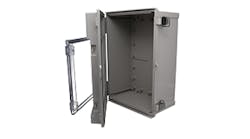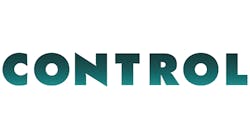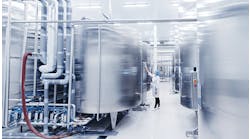Many people in control and automation field have a pretty snooty attitude about enclosures. Oh sure, they just sit there, but it would probably be smart to be less dismissive about hardware that protects so many critical components and, consequently, covers so many engineers' metaphorical rear ends.
Of course, it may have seemed like enclosures were on their way to Commodity Land recently. More control devices and their networks are over-molded and encapsulated to the point that they claim to no longer need enclosures. Flash memory that doesn't need a protected housing is replacing hard-drives that traditionally require enclosures. And more transceivers, PLCs and similar components are using twisted-pair fieldbuses, Ethernet and even wireless, so less cabling, cabinets and other support hardware is needed.
However, as computing power continues to shrink and be distributed further into the field, many process control users are finding they need more, smaller and more specialized housing for protection against overheating, electromagnetic interference (EMF), reduction of hazardous substance (RoHS) compliance and to meet other multiplying needs. So, far from becoming passe, enclosures probably are diversifying more now than at any point in their collective history. For example, to allow increased customization of its plastic and aluminum enclosures, Fibox recently added a computer-aided manufacturing (CAM) and computer numerical control (CNC) machining system for milling, engraving, cutting and embossing. This enables faster turnaround on modifications, including threaded and unthreaded holes, and panel, door, side and window cutouts. This new CAM machining system can customize any of Fibox's more than 750 standard enclosures. Also, a graphics converter built into the new CAM system's software makes it easy to accept files from computer-aided design (CAD) programs and convert them to the proper machining instructions.
ProEquipment Co. uses a variety of Hoffman's Concept Enclosures to protect the computers, starters, contact relays, and other controls in its Pro Car Wash systems.
Out and About
No longer confined to the plant floor, some enclosures are being successfully deployed in unconventional settings. For example, to prevent unexpected equipment failures and downtime, Pro Equipment Co. in Benton, Ky., uses Concept enclosures from Hoffman to protect its Pro Car Wash systems' computers, PLCs, starters, contact relays and other controls in wet and dry settings (See Figure 1). The OEM uses more than 2,000 types of cabinets in the automatic and self-serve car washes its sells worldwide. Pro Equipment's PLC controls every automatic wash function.
"In one equipment room, a water line burst and sprayed water directly on the Concept box housing the PLC," says Randy Travis, Pro Equipment's owner and president. "We had one foot of standing water in the room, but our PLC was safe, dry and protected. Though car washes store many spare parts, it's too expensive to keep a $12,000 backup computer, so the enclosure is critical to car wash operations."
In addition, Austrian Federal Railways uses Rittal's enclosures and racks in its multi-system Siemens Eurosprinter Rh1216 050-5 locomotive (See Figure 2), which broke the 51-year-old record for world's fastest rail vehicle by traveling at 222 mph (357 km/h) twice in one hour on Sept. 2 on German Railways' (DB) high-speed line between Ingolstadt and Nuremberg. Eurosprinter incorporates Rittal's PS 4000 enclosure system with 16 mounting plates and two large swing frames. The PS 4000 with EMC forms the backbone of the electronic enclosure, which is protected against intense vibration and high-frequency electromagnetic interference. Components for distributing 3,000 V DC are accommodated in Rittal's 3 kV racks.
Austrian Railways' record-breaking, multi-system Siemens Eurosprinter Rh 1216 050-5 locomotive uses Rittal's PS 4000 enclosure with EMC equipment forms and 3 kV racks.
"Railway operators and vehicle manufacturers place high demands on the quality of the assemblies and components installed," says Hermann Becker, Rittal Rail Traffic Systems account manager. "Nowadays, electrically powered locomotives' control technology contains a huge number of electronic and electromechanical components, which have to be safely accommodated in enclosures and on frameworks throughout the locomotive's entire service life. Special products are used that are adapted to the dynamic requirements."
Novelty applications aside, enclosure diversification means it's more important than ever for end users, system integrators and others specifying professionals to be thoroughly aware of their applications' changing characters and what level of protection they truly need. "Specifying enclosures to protect electrical and electronic components has become increasingly complicated. In most applications, it's no longer enough to order a simple box to house your equipment. Many factors, including application demands, hardware, performance and operating environment can greatly affect the operational reliability and life of your equipment," says Emily Orvik, Hoffman's communications manager. "Determining the right enclosure for your application is made easier by seeking suppliers with the most choices, application experience and technical resources. No matter what brand you select, the following tips and considerations will make getting the right enclosure easier."
Simpler Specifying
To help users select the most appropriate enclosures, Orvik adds that Hoffman offers six tips to help them cover and evaluate all of the necessary options:
1) Application. By fully understanding the demands of your application, you can rank its most important features and attributes. For instance, do you need a high level of protection against corrosion? Is your enclosure in the traffic areas on a busy plant floor or in a less conspicuous location? Do environmental contaminants such as dust or oil pose a threat to your equipment? Answering these concerns will help narrow selection options regarding enclosure type, materials and performance. Ranking these considerations allows you to better recognize priorities needed for your application. Use these requirements to select from welded steel or the corrosion protection of stainless steel. Perhaps an aluminum, fiberglass or ABS enclosure better serves the application, and provides the proper level of protection, strength, performance and value.
2) Size. Early in the process, you'll need to determine the physical characteristics of your enclosure. Consider the dimensions of the equipment you'll be housing to calculate the total amount of panel space you need, including minimum height, width and depth. Many control and network devices require 19-in. and 23-in. rack standards, which may enable you to select a modular enclosure design, while other types of electronics may require a different size to accommodate your equipment.
After you determine the containment size of the enclosure, you'll also need to consider if any space or use limitations exist in the installation environment. There are often many different cabinet and mounting configurations that can provide the performance you require. An experienced application engineer or knowledgeable distributor can present options that will fit most effectively within your workspace. These might include horizontal, low-profile, or wall-mount cabinets or even portable enclosures.
3) User Interface. It's seldom adequate to specify a simple square box. Examine your need to access the enclosed equipment. Will accessories make the enclosure user-friendly? What is the anticipated frequency of service or maintenance? Are there cleaning, ergonomic, security, safety and usage considerations? Considering these requirements, you might select removable panels, wiring and/or backplane access. This can be through an added set of doors, locking latches, reconfigurable interior mounting, secure cabinets with partial accessibility to keyboards or a limited number of components. You also can address usage issues with operator interface workstations or pushbutton enclosures. You’ll also need to assess the routing of wiring, and consider the mounting option that will work best for your application.
With every enclosure there are two environments that require attention: the interior environment of the populated enclosure and the exterior environment surrounding the enclosure. Each presents distinct challenges to proper specification. NEMA standards can help you evaluate your needs where non-hazardous environmental conditions exist, and other worldwide standards can help you narrow your specifications as well.
4) Environment. Examine the immediate area in which you intend to install the enclosure. Will your enclosure be installed indoors or outside? Assess the environmental threats to your components. Contaminants may range from dust, water, oil and dirt, harsh chemicals, UV light, solar heat gain, weather forces, salt water or temperature extremes. In an equipment-rich environment, hidden threats might include electromagnetic or radio-frequency interference, which can play havoc with enclosed equipment. In a busy industrial area, the enclosure could be subject to periodic accidental impact or shock. And more sensitive, critical components could be at risk from excessive vibration or seismic dangers in certain geographic regions. Suppliers offering a complete line of enclosures and in-house testing can address your performance needs in even the most demanding environments.
5) Additional Protection. Whether generated internally or externally, excessive heat and humidity are the most common challenges in protecting components from premature failure or unreliable performance. Todays compact devices consume more power and generate more heat in less space, making thermal management an even more crucial consideration when specifying an enclosure. Because managing excessive internal temperatures is so critical to reliable operation, most manufacturers offer solutions to deal with these conditions. For example, Hoffman provides free thermal management sizing and selection software to help you calculate your heat dissipation needs based on your specific equipment, and suggests the appropriate thermal solution for your enclosure.
6) Certifications. Ratings governed by national and international standards organizations such as NEMA, UL, CSA, IEC and VDE are critical to help you specify the appropriate product for your application. These ratings standardize product performance from one manufacturer to the next, identify an enclosure's ability to withstand environmental influences, and/or offer assurance that products conform to established guidelines for performance and public safety. Standards such as UL and CSA require enclosure testing by qualified evaluators and perform site inspections to assure manufacturing compliance for methods and materials. By selecting a manufacturer that demonstrates strict adherence and fluency with international standards, your enclosure will not only perform in a safe and effective manner within your application, but will also satisfy electrical/building codes, OSHA requirements and even workers' union-based provisions.
In addition, RoHS, which regulates environmentally sound end-of-life disposal of components, continues to receive attention. This EU directive went into affect in July 2006. China and California are expected to follow with their own versions.
Installation Considerations
In addition, Stahlin Enclosures reports that several installation factors should be considered when selecting an enclosure:
1) Equipment mounting panel. The back panels are optional and must be selected and ordered separately. Enclosure back panels can be fabricated from aluminum, painted carbon steel, fiberglass and stainless steel. The enclosure construction material and the amount of time that an enclosure may be open and exposed to the application environment should be considered in making this selection.
2) Wiring connections. Hubs for connecting conduit to enclosures include: PVC-coated metal hubs designed for use with PVC-coated rigid metal conduit systems, PVC hubs for use with PVC conduit, and aluminum hubs for use with metal conduit. All hubs use an o-ring to seal between the hub and enclosure wall. Nylon cord-grip fittings are designed to seal out moisture, dust or other foreign material, and to form a positive sealing grip when installing an entrance cord or wire through an enclosure wall. Likewise, Sigma-form, feed-through seals provide a watertight, fume-tight seal at cable entrances to enclosures.
3) Enclosure mounting. Besides typical wall-mount and floor-mount configurations, some enclosures also are available with pedestal mounting, mounting feet and/or custom-fabricated floor mounting kits.
4) Grounding. Grounding electrical and electronic equipment in enclosures is extremely important for two reasons: to ensure safety of personnel operating the equipment and to prevent equipment damage from transient voltages generated by switching conditions, system faults and EMI/RFI. Grounding continuity must be maintained between the equipment in the enclosure and the conduits or cables entering and exiting the enclosure. Because fiberglass is an insulator, grounding must be maintained by using jumpers between internal equipment and conduit or cable connections in fiberglass enclosures. To meet this need, conduit hubs for use in fiberglass enclosures must have built-in grounding screws to comply with U L and NEC requirements.
The key to a reliable electrical system including the enclosure is a grounded system with all materials properly selected for the application and installed in accord with the recommended installation guidelines, the product listing and NEC. For more information on grounding, refer to UL’s Specification UL 50 and NEC Code's Article 250.
Selection Instructions
To help users learn to pick the most appropriate housings, Stahlin Enclosureshas compiled a 32-page guide, which is available by clicking on the "Techncal Tools" section of its website. The guide covers sizes, ratings, materials, fastenings, and other features, and even has a worksheet that users can fill out to help calculate their specifications. One of its many useful tables is presented here:IP, NEMA Protection Categories
To protect valuable electrical and electronic components, enclosures must withstand a wide range of environmental influences, whether they're located indoors or outdoors. Rittal presents many definitions and combinations of IP and NEMA rating on its www.rittal.com. website. Visitors can click on "Technical Information" under "Services & Support," and then clock on "Protection Categories," or go to http://www.rittal.com/services_support/technical_information/protection_categories/index.html.




